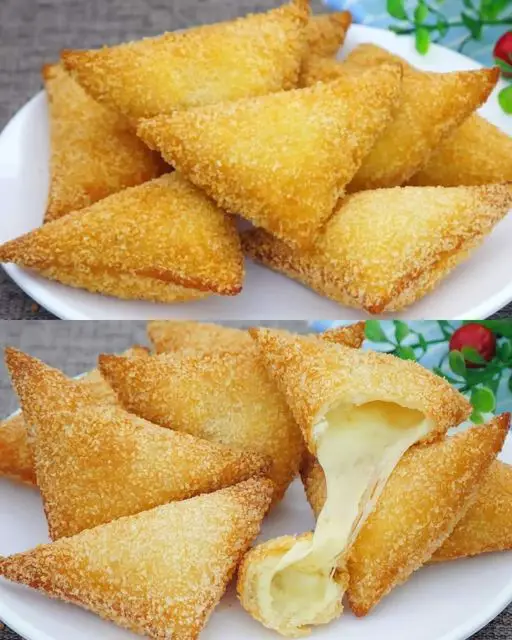Table of Contents
hide
Ingredients:
For the Potato Mixture:
-
- 1 potato (approximately 180 grams)
- 1/4 teaspoon pepper powder (optional)
For the Bread Pockets:
-
- 8 slices of white bread (crusts removed if desired)
- Mozzarella cheese (quantity as desired)
- 1 egg
- 200 grams of bread crumbs
For Cooking:
-
- Vegetable oil (for shallow frying)
Instructions:
1. Preparing the Potato Mixture:
-
- Cook the Potato: Start by peeling the potato and cutting it into smaller chunks. Boil the potato pieces in salted water until they are soft and tender, which should take about 10-15 minutes. Check with a fork; if it goes through easily, the potatoes are done.
- Mash the Potato: Drain the cooked potatoes and transfer them to a mixing bowl. Mash them until smooth, ensuring there are no lumps.
- Season the Potato: For a bit of extra flavor, add 1/4 teaspoon of pepper powder to the mashed potato. Mix well to combine. This step is optional and can be skipped if you prefer a milder taste.
2. Assembling the Cheese Potato Bread:
-
- Prepare the Bread: Take 8 slices of white bread and remove the crusts if you prefer a softer, more even texture. This step is optional but can make the final product more uniform.
- Add the Filling: Place a small amount of the mashed potato mixture (about a tablespoon) in the center of each bread slice. Add a piece of mozzarella cheese on top of the potato. Adjust the cheese quantity to your liking—more cheese means a gooier, meltier center.
- Seal the Bread: Carefully fold the bread over the filling, pressing the edges to seal them together. You can use a little water around the edges to help seal the bread if needed. Make sure the edges are tightly sealed so the cheese doesn’t escape during frying.
3. Coating and Frying:
-
- Prepare the Egg Wash: In a shallow bowl, beat 1 egg thoroughly. This will help the bread crumbs stick to the bread pockets.
- Prepare the Bread Crumbs: Place 200 grams of bread crumbs in another shallow bowl. You can use store-bought bread crumbs or make your own by pulsing stale bread in a food processor.
-
- Coat the Bread Pockets: Take each sealed bread piece and dip it into the beaten egg, making sure it’s fully coated. Then, roll it in the bread crumbs until evenly covered. This double coating ensures a crispy, golden crust.
- Heat the Oil: In a large skillet, heat enough vegetable oil over medium heat for shallow frying. Test the oil by dropping a small piece of bread crumb into it; if it sizzles and rises to the surface, the oil is ready.
- Fry the Bread Pockets: Carefully place the coated bread pockets in the hot oil. Fry them until golden brown and crispy on all sides, which should take about 2-3 minutes per side. Use tongs to turn them over gently to avoid breaking the seal.
- Drain Excess Oil: Once fried, remove the bread pockets from the skillet and place them on a plate lined with paper towels to drain any excess oil.
4. Serving:
- Serve Warm: These Cheese Potato Bread Pockets are best enjoyed warm when the mozzarella is still gooey and stretchy. Serve them with your favorite dipping sauces like marinara, ranch, or a spicy ketchup.
Enjoy your delicious Cheese Potato Bread Pockets!
Nutrition Facts (Per Serving, Estimated):
-
- Calories: 250 kcal
- Carbohydrates: 30g
-
- Protein: 10g
- Fat: 10g
- Saturated Fat: 3g
- Fiber: 2g
- Sodium: 400mg
Tips for Making the Perfect Cheese Potato Bread Pockets:
-
- Use Fresh Mozzarella for Extra Gooeyness: Fresh mozzarella cheese tends to melt better and provides a lovely, gooey center. However, you can use any type of melting cheese you prefer.
- Don’t Overfill: Be cautious not to overfill the bread slices. Too much filling might cause the bread to break or the cheese to leak out during frying.
- Make Sure the Oil Is Hot Enough: Proper oil temperature is crucial for frying. If the oil is too cool, the bread pockets will absorb too much oil and become greasy. If it’s too hot, they might burn before the inside is heated through.

